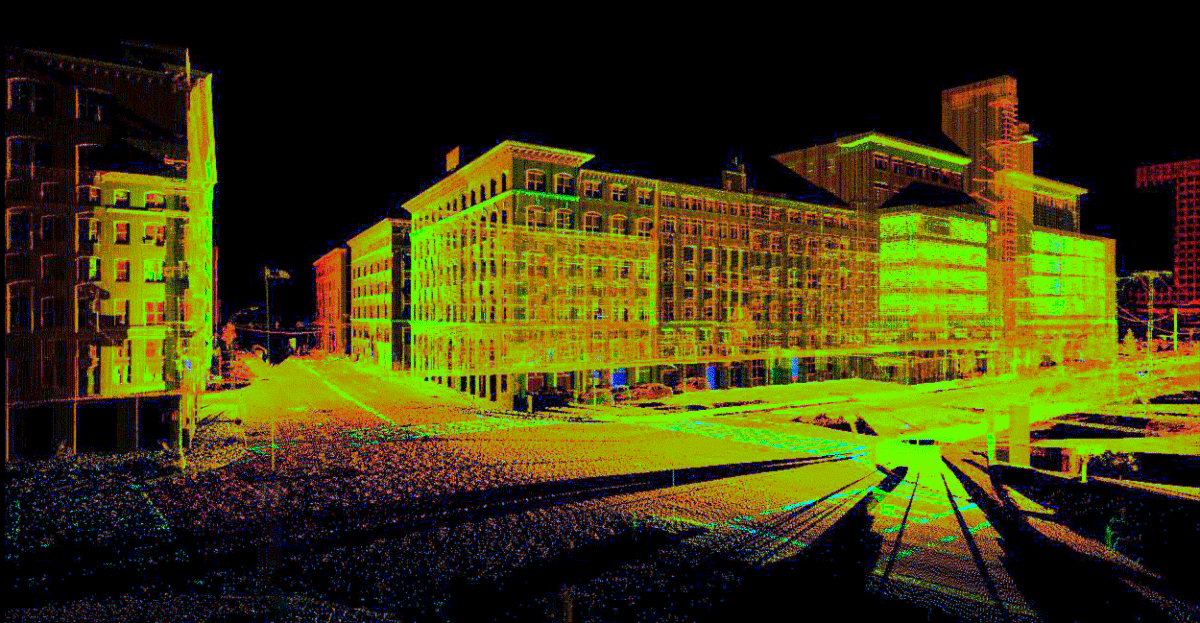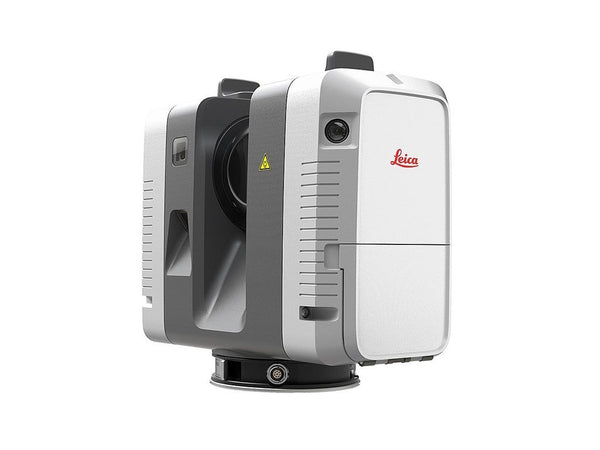Enhancing Production Processes: The Influence of 3D Laser Scanning on Quality Assurance
3D laser scanning technology is changing top quality control in production. By offering high-resolution information and exact dimensions, it makes it possible for producers to recognize inconsistencies from specifications easily. This improvement not just streamlines assessment procedures but additionally improves functional performance. 3D Scanning. Nevertheless, the execution of this innovation features its own collection of challenges. Exploring these aspects reveals the wider implications for industries and the future landscape of manufacturing

Understanding 3D Laser Scanning Innovation
Although 3D laser scanning innovation has advanced significantly in recent times, its basic principle continues to be simple: capturing the accurate geometry of objects making use of laser beams. This technology uses laser light to measure ranges between the scanner and numerous factors on an object's surface. The information gathered is then processed to produce a thorough 3D model, properly mirroring the measurements and shapes of the checked things.
Commonly, 3D laser scanners can be categorized into 2 major types: get in touch with and non-contact scanners. Contact scanners physically touch the challenge collect dimensions, whereas non-contact scanners make use of laser beam of lights to record information from a range. The adaptability of this innovation allows its application throughout numerous sectors, consisting of architecture, production, and building and construction. Its capability to create high-resolution models helps with quality assurance, reverse design, and quick prototyping, ultimately enhancing design accuracy and performance in manufacturing procedures.
Benefits of 3D Laser Scanning in Manufacturing
As manufacturers seek to boost performance and precision in their procedures, the benefits of 3D laser scanning have come to be significantly evident. This ingenious innovation allows for very accurate and quick dimensions of complex geometries, substantially reducing the moment needed for top quality checks. By catching thorough data, manufacturers can determine discrepancies early in the manufacturing process, therefore decreasing waste and remodel costs.
3D laser scanning facilitates much better design validation, allowing engineers to contrast as-built problems with original requirements. This ability guarantees that any deviations are immediately dealt with, improving total product high quality. Additionally, the modern technology sustains the development of electronic doubles, which can be made use of for simulations and procedure optimizations. Because of this, makers not just boost their operational performance but likewise boost their competitive benefit on the market. Overall, the integration of 3D laser scanning represents a transformative step towards attaining higher standards in making quality control.
Integration of 3D Laser Scanning Into Quality Assurance
Integrating 3D laser scanning right into quality control procedures boosts the precision and efficiency of examinations throughout manufacturing. This innovation allows manufacturers to capture thorough, high-resolution information of components and settings up, permitting accurate dimensions and comparisons versus design specs. By employing 3D laser scanning, organizations can recognize deviations from resistances better, which is vital for preserving product honesty.

Real-World Applications and Study
Real-world applications of 3D laser scanning in producing show its transformative effect throughout numerous sectors. Aerospace business use this technology to conduct exact evaluations of parts, guaranteeing they meet rigid safety criteria. A notable situation entailed a leading aircraft maker that employed 3D laser scanning to streamline its quality assurance procedures, substantially minimizing assessment times and mistakes.
In the vehicle sector, manufacturers have actually implemented laser scanning to produce digital twins of their cars, making it possible for real-time adjustments throughout manufacturing. One automobile firm reported a 30% decrease in rework costs after incorporating this technology right into their production line.
Moreover, in the consumer items industry, companies are using 3D laser scanning for quick prototyping, enabling quicker versions and enhanced item layouts. These applications illustrate exactly how 3D laser scanning not only boosts accuracy yet likewise improves effectiveness and technology across multiple production domain names.
Overcoming Obstacles in Application
Applying 3D laser scanning in manufacturing presents numerous challenges that organizations need to navigate to totally understand its benefits. One substantial obstacle is the initial expense of tools and software, which can discourage business from embracing this modern technology. Furthermore, integrating 3D laser scanning right into existing operations calls for conquering resistance to alter among employees, demanding detailed training programs to assure proficiency. Information management additionally postures a challenge, as the high quantity of information produced by 3D scanning should be effectively refined and examined to derive actionable understandings. Compatibility concerns with tradition systems might prevent seamless integration, requiring possible upgrades or modifications. Dealing with these challenges is necessary for suppliers intending to boost quality assurance and enhance manufacturing procedures. By establishing clear strategies for training, financial investment, and information management, firms can mitigate these obstacles and release the transformative potential of 3D laser scanning in their operations.
Future Fads in 3D Laser Scanning for Manufacturing
As manufacturing proceeds to develop, the assimilation of 3D laser scanning with enhanced automation is anticipated to change production procedures. Enhanced information analytics will play an essential function in maximizing workflows and improving top quality control. These fads highlight the possibility for higher efficiency and precision in making atmospheres.

Increased Automation Combination
The combination of automation in production has actually been steady, the future of 3D laser scanning is poised to increase this trend substantially. As manufacturing processes become significantly intricate, the need for precise, real-time measurements grows. 3D laser scanning technology supplies automated information capture, lowering labor expenses and minimizing human error. This integration enables makers to streamline quality assurance processes, making it possible for rapid discovery of inconsistencies in production. Additionally, the placement of 3D laser scanning with robotics and news automated systems assists in seamless operations, enhancing overall efficiency. As producers adopt these advanced modern technologies, they can expect better accuracy and productivity, placing themselves competitively in a rapidly developing market. The synergy in between automation and 3D laser scanning notes a considerable jump ahead in making advancement.
Enhanced Data Analytics
The integration of automation has led the way for improvements in data analytics within the domain name of 3D laser scanning. Producers are progressively leveraging sophisticated formulas and device knowing strategies to evaluate vast datasets created by laser scans. This enhanced information analytics capacity enables for real-time monitoring of manufacturing procedures, enabling the identification of problems and variances more properly than traditional methods. Predictive analytics can predict possible concerns, greatly reducing downtime and enhancing general performance. The ability to picture information in 3 measurements offers deeper insights right into manufacturing process, click now promoting much better decision-making. As 3D laser scanning technology remains to evolve, the function of data analytics will certainly end up being significantly important in driving advancement and maintaining competitive benefit in production.
Frequently Asked Inquiries
What Industries Benefit the Many From 3D Laser Scanning?
The sectors that profit most from 3D laser scanning consist of production, building and construction, aerospace, auto, and medical care. These sectors make use of the innovation for precision dimensions, quality control, and reliable design processes, significantly enhancing total operational performance.
Exactly How Does 3D Laser Scanning Compare to Traditional Dimension Methods?
3D laser scanning supplies greater precision and speed compared to typical measurement approaches. It catches comprehensive geometries promptly, decreasing human mistake and facilitating far better evaluation, which ultimately boosts overall top quality control in various sectors.
What Is the Expense of Implementing 3D Laser Scanning Modern Technology?
The expense of applying 3D laser scanning modern technology varies substantially, commonly ranging from $10,000 to $100,000, depending upon training, software, and devices. Organizations needs to consider these expenditures versus possible performance and high quality enhancements.
Are There Details Software Application Needs for 3D Laser Scanning?
Yes, 3D laser scanning calls for details software program, including information processing and modeling applications. Typical selections include CAD software program, factor cloud handling tools, and specialized applications that promote the assimilation and evaluation of checked data for ideal results.
Exactly how Lengthy Does a Typical 3D Laser Scanning Process Take?
A normal 3D laser scanning procedure can take anywhere from a couple of minutes to several hours, depending on elements like the dimension of the object, you could check here intricacy of the environment, and called for degree of detail for accuracy.
3D laser scanning technology is transforming high quality control in manufacturing. 3D laser scanning modern technology has evolved substantially in recent years, its fundamental principle continues to be straightforward: capturing the accurate geometry of objects making use of laser light beams. Incorporating 3D laser scanning right into top quality control procedures boosts the accuracy and performance of assessments throughout manufacturing (3D Scanning). 3D laser scanning modern technology uses automated data capture, decreasing labor prices and minimizing human error. The cost of carrying out 3D laser scanning modern technology differs considerably, commonly ranging from $10,000 to $100,000, depending on training, software application, and tools